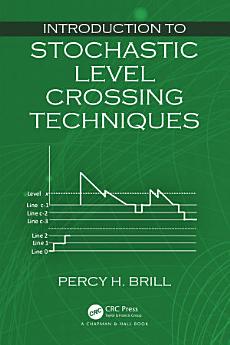Introduction to Stochastic Level Crossing Techniques
Sep 2023 · CRC Press
Ebook
278
Pages
family_home
Eligible
info
reportRatings and reviews aren’t verified Learn More
About this ebook
Introduction to Stochastic Level Crossing Techniques describes stochastic models and their analysis using the System Point Level Crossing method (abbreviated SPLC or LC). This involves deriving probability density functions (pdfs) or cumulative probability distribution functions (cdfs) of key random variables, applying simple level-crossing limit theorems developed by the author. The pdfs and/or cdfs are used to specify operational characteristics about the stochastic model of interest. The chapters describe distinct stochastic models and associated key random variables in the models. For each model, a figure of a typical sample path (realization, i.e., tracing over time) of the key random variable is displayed. For each model, an analytic (Volterra) integral equation for the stationary pdf of the key random variable is created−by inspection of the sample path, using the simple LC limit theorems. This LC method bypasses a great deal of algebra, usually required by other methods of analysis. The integral equations will be solved directly, or computationally. This book is meant for students of mathematics, management science, engineering, natural sciences, and researchers who use applied probability. It will also be useful to technical workers in a range of professions.
Key Features:
- A description of one representative stochastic model (e.g., a single-server M/G/1 queue; a multiple server M/M/c queue; an inventory system; etc.)
- Construction of a typical sample path of the key random variable of interest (e.g., the virtual waiting time or workload in queues; the net on-hand inventory in inventory systems; etc.)
- Statements of the simple LC theorems, which connect the sample-path upcrossing and downcrossing rates across state-space levels, to simple mathematical functions of the stationary pdf of the key random variable, at those state-space levels
- Creation of (usually Volterra) integral equations for the stationary pdf of the key random variable, by inspection of the sample path
- Direct analytic solution of the integral equations, where feasible; or, computational solutions of the integral equations
- Use of the derived stationary pdfs for obtaining operational characteristics of the model
About the author
Percy H. Brill is a Professor Emeritus in the Management Science area of the Odette School of Business, and Adjunct Professor in the Departments of Mathematics and Statistics, at the University of Windsor in Canada.
Rate this ebook
Tell us what you think.
Reading information
Smartphones and tablets
Install the Google Play Books app for Android and iPad/iPhone. It syncs automatically with your account and allows you to read online or offline wherever you are.
Laptops and computers
You can listen to audiobooks purchased on Google Play using your computer's web browser.
eReaders and other devices
To read on e-ink devices like Kobo eReaders, you'll need to download a file and transfer it to your device. Follow the detailed Help Center instructions to transfer the files to supported eReaders.




